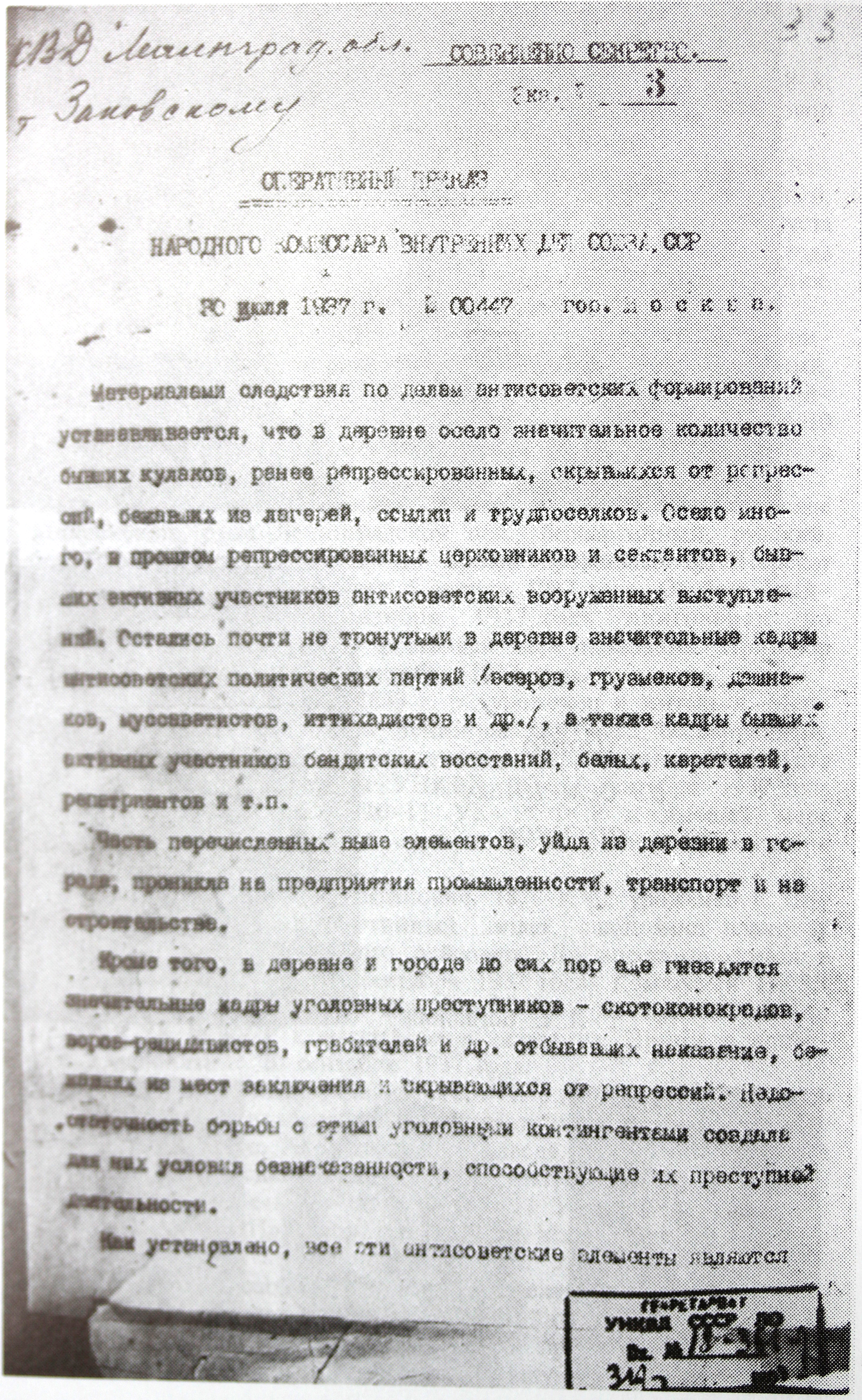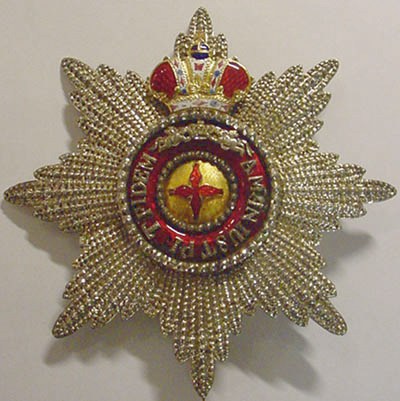|
August Kork
August Ivanovich Kork (, also Аугуст Яанович Корк; 11 June 1937) was an Estonian Red Army commander ( Komandarm 2nd rank) who was tried and executed during the Great Purge in 1937. Kork became an officer of the Imperial Russian Army and graduated from the General Staff Academy. He served as a staff officer during World War I and in February 1917 was at the Western Front headquarters. Kork became a Bolshevik and joined the Red Army. He fought in the Russian Civil War, initially as chief of staff of the Bolshevik-sponsored Estonian Red Army and then as assistant commander of the 7th Army. In July 1919 Kork became commander of the 15th Army, defeating Nikolai Yudenich's Northwestern Army and defending Petrograd. He led the army in the Polish–Soviet War and in October 1920 became commander of the 6th Army, which defeated the last White Army in Crimea, led by Pyotr Nikolayevich Wrangel. After the end of the campaign, Kork took command of the Kharkov Milit ... [...More Info...] [...Related Items...] OR: [Wikipedia] [Google] [Baidu] |
Aardla
Aardla is a village in Kastre Parish, Tartu County in eastern Estonia. Military commander August Kork August Ivanovich Kork (, also Аугуст Яанович Корк; 11 June 1937) was an Estonian Red Army commander (Komandarm 2nd rank) who was tried and executed during the Great Purge in 1937. Kork became an officer of the Imperial Russi ... (1887–1937) was born in Aardla. References Villages in Tartu County {{Tartu-geo-stub ... [...More Info...] [...Related Items...] OR: [Wikipedia] [Google] [Baidu] |
Red Banner Caucasus Army
The Red Banner Caucasus Army (russian: Краснознамённая Кавказская армия) was a Soviet army existing from 1921 to 1935. The army was named the Independent Caucasus Army on its creation, and carried this name until August 1923, when it was renamed the Red Banner Caucasus Army. It ceased to exist on May 17, 1935 when it was redesignated as the Transcaucasian Military District in connection with the overall reorganization of the Red Army. The army consisted of 6 territorial divisions, an air force, and some reserve troops. History The army was established at the end of May 1921 from the 11th Army, a unit of the Caucasus Front, which was dissolved on May 29, 1921. The army unified the territorial forces of the Transcaucasian Soviet Federated Socialist Republic (but in reality was under the control of the Russian Soviet Federated Socialist Republic, and later of the Soviet Union). At a meeting of the Presidium of the Central Executive Committee of the U ... [...More Info...] [...Related Items...] OR: [Wikipedia] [Google] [Baidu] |
General Staff Academy (Imperial Russia)
The General Staff Academy () was a Russian military academy, established in 1832 in St.Petersburg. It was first known as the Imperial Military Academy (Императорская военная академия), then in 1855 it was renamed Nicholas General Staff Academy (in commemoration of Emperor Nicholas I) and in 1909 - Imperial Nicholas Military Academy (Императорская Николаевская военная академия). According to Peter Kenez, "The Nicholas Academy, or Staff College, gave the highest military education in Russia. The Academy was organized, as were many institutions of the Russian army, on the German model. Only the best officers, after some years of service in regiments, could enter this academy. Of the annual 150 graduates, the 50 best students received appointment at the General Staff and the others returned to their regiments. Practically the entire high command of the Russian army in the World War and the Volunteer Army in the Civil ... [...More Info...] [...Related Items...] OR: [Wikipedia] [Google] [Baidu] |
Great Purge
The Great Purge or the Great Terror (russian: Большой террор), also known as the Year of '37 (russian: 37-й год, translit=Tridtsat sedmoi god, label=none) and the Yezhovshchina ('period of Yezhov'), was Soviet General Secretary Joseph Stalin's campaign to solidify his power over the party and the state; the purges were also designed to remove the remaining influence of Leon Trotsky as well as other prominent political rivals within the party. It occurred from August 1936 to March 1938. Following the death of Vladimir Lenin in 1924 a power vacuum opened in the Communist Party. Various established figures in Lenin's government attempted to succeed him. Joseph Stalin, the party's General Secretary, outmaneuvered political opponents and ultimately gained control of the Communist Party by 1928. Initially, Stalin's leadership was widely accepted; his main political adversary Trotsky was forced into exile in 1929, and the doctrine of " socialism in one country" b ... [...More Info...] [...Related Items...] OR: [Wikipedia] [Google] [Baidu] |
Komandarm 2nd Rank
2nd rank (russian: Командарм 2-го ранга) is the abbreviation to Commanding officer of the Army 2nd class (russian: Командующий армией 2-го ранга, Komanduyushchiy armiyey 2-go ranga; ), and was a military rank in the Soviet Armed Forces of the USSR in the period from 1935 to 1940. It was also the designation to military personnel appointed to command a field army sized formation (XXXX). Until 1940 it was the third highest military rank of the Red Army. It was equivalent to ''Komissar army 2nd rank'' (ru: армейский комиссар 2-ого ранга) of the political staff in all military branches, ''Fleet Flag Officer 2nd rank'' (ru: флагман флота 2-ого ранга) in the ''Soviet navy'', or to ''Komissar of state security 2nd rank'' (ru: комиссар государственной безопасности 2-ого ранга). With the reintroduction of regular general ranks, the designation ''Komandarm 1st r ... [...More Info...] [...Related Items...] OR: [Wikipedia] [Google] [Baidu] |
Order Of Saint Stanislaus (Imperial House Of Romanov)
pl, Order św. Stanisława , image = , caption = , image2 = , caption2 = Ribbon of the order , awarded_by = Head of the House of Romanov , type = Dynastic order of knighthood , motto = Praemiando incitat("Rewarding encourages") , day = , eligibility = , for = Military and civil merits , status = active , head_title = Sovereign , head = , head2_title = , head2 = , chancellor = , commander = , grades = Knight Grand CrossKnight CommanderKnight , former_grades = , date = 1831 – 1918 (National Order)1918 - Present (house order) , house = House of Romanov , religion = Russian Orthodox , higher = Order of Saint Anastasia , lower = Order of Saint Michael the Archangel , ribbon = Bright red with a white stripe on either side and a thinner white stripe on the end of either ... [...More Info...] [...Related Items...] OR: [Wikipedia] [Google] [Baidu] |
Order Of Saint Anna
The Imperial Order of Saint Anna (russian: Орден Святой Анны; also "Order of Saint Anne" or "Order of Saint Ann") was a Holstein ducal and then Russian imperial order of chivalry. It was established by Karl Friedrich, Duke of Holstein-Gottorp, on 14 February 1735, in honour of his wife Anna Petrovna, daughter of Peter the Great of Russia. Originally, the Order of Saint Anna was a dynastic order of knighthood; but between 1797 and 1917 it had dual status as a dynastic order and as a state order. The Order of St. Anna continued to be awarded after the revolution by Grand Duke Kirill Vladimirovich, Grand Duke Vladimir Kirillovich, and Grand Duchess Maria Vladimirovna. Today, the Russian Imperial Order of St. Anna, awarded by Grand Duchess Maria Vladimirovna is recognized as an order of chivalry by the privately operated ICOC as a continuation of the pre-Revolutionary order, and has been approved for wear with military uniform by the Russian Federation, but not by s ... [...More Info...] [...Related Items...] OR: [Wikipedia] [Google] [Baidu] |
Honorary Revolutionary Weapon
The Honorary Revolutionary Weapon () was the highest award in the Soviet Armed Forces between 1919 and 1930. It was awarded to senior commanders for exceptional combat achievement; the majority of recipients received it for actions during the Russian Civil War. History After the October Revolution, the Order of the Red Banner, established in 1918, was the only Soviet decoration available to reward military personnel for their actions in the Russian Civil War. Instead of awarding the Order of the Red Banner, the All-Russian Central Executive Committee (VTsIK) gave Sergey Kamenev and Vasily Shorin what it described as "weapons with the badge of the Order of the Red Banner" on 8 August 1919 in recognition of their victories on the Eastern Front against the White forces of Alexander Kolchak. The award consisted of a sword (''shashka'') that had a badge of the Order of the Red Banner of the RSFSR superimposed on a gilt hilt. It was reminiscent of the Saint George Sword given to se ... [...More Info...] [...Related Items...] OR: [Wikipedia] [Google] [Baidu] |
Order Of The Red Banner
The Order of the Red Banner (russian: Орден Красного Знамени, Orden Krasnogo Znameni) was the first Soviet military decoration. The Order was established on 16 September 1918, during the Russian Civil War by decree of the All-Russian Central Executive Committee. It was the highest award of Soviet Russia, subsequently the Soviet Union, until the Order of Lenin was established in 1930. Recipients were recognised for extraordinary heroism, dedication, and courage demonstrated on the battlefield. The Order was awarded to individuals as well as to military units, cities, ships, political and social organizations, and state enterprises. In later years, it was also awarded on the twentieth and again on the thirtieth anniversary of military, police, or state security service without requiring participation in combat (the "Long Service Award" variant). Award history The Russian Order of the Red Banner was established during the Russian Civil War by decree of t ... [...More Info...] [...Related Items...] OR: [Wikipedia] [Google] [Baidu] |
Russian Civil War
{{Infobox military conflict , conflict = Russian Civil War , partof = the Russian Revolution and the aftermath of World War I , image = , caption = Clockwise from top left: {{flatlist, *Soldiers of the Don Army *Soldiers of the Siberian Army *Suppression of the Kronstadt rebellion *American troop in Vladivostok during the intervention *Victims of the Red Terror in Crimea *Hanging of workers in Yekaterinoslav by the Austrians *A review of Red Army troops in Moscow. , date = 7 November 1917 – 16 June 1923{{Efn, The main phase ended on 25 October 1922. Revolt against the Bolsheviks continued in Central Asia and the Far East through the 1920s and 1930s.{{cite book, last=Mawdsley, first=Evan, title=The Russian Civil War, location=New York, publisher=Pegasus Books, year=2007, isbn=9781681770093, url=https://archive.org/details/russiancivilwar00evan, url-access=registration{{rp, 3,230(5 years, 7 months and 9 day ... [...More Info...] [...Related Items...] OR: [Wikipedia] [Google] [Baidu] |
World War I
World War I (28 July 1914 11 November 1918), often abbreviated as WWI, was List of wars and anthropogenic disasters by death toll, one of the deadliest global conflicts in history. Belligerents included much of Europe, the Russian Empire, the United States, and the Ottoman Empire, with fighting occurring throughout Europe, the Middle East, Africa, the Pacific Ocean, Pacific, and parts of Asia. An estimated 9 million soldiers were killed in combat, plus another 23 million wounded, while 5 million civilians died as a result of military action, hunger, and disease. Millions more died in Genocides in history (World War I through World War II), genocides within the Ottoman Empire and in the Spanish flu, 1918 influenza pandemic, which was exacerbated by the movement of combatants during the war. Prior to 1914, the European great powers were divided between the Triple Entente (comprising French Third Republic, France, Russia, and British Empire, Britain) and the Triple A ... [...More Info...] [...Related Items...] OR: [Wikipedia] [Google] [Baidu] |





